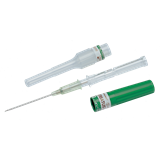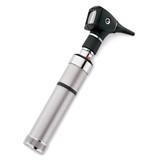CSIRO
Researchers at two CSIRO divisions – Industrial Physics and Manufacturing & Infrastructure Technology – have developed a diagnostic tool filled with sensors that detects differences in pressure along the patient’s oesophagus when swallowing.
This, in turn, is used to construct a profile of the swallowing action and allows doctors to more accurately identify what is causing the problem.
Researchers have been able to reduce the diameter of the fibre-optic catheter to about 3 mm, which is almost half the diameter of some of the commonly used catheters.
‘In addition to being smaller, and thus less intrusive, the fibre-optic technology doesn’t require the patient to sit still for a long time,’ says CSIRO’s Dr John Arkwright.
‘Another advantage of using the fibre-optic technology is that, because it uses wavelengths of light, we only need a single fibre. That means we can have up to 50 pressure sensors in the one optical fibre without increasing the diameter of the catheter,’ he says.
The CSIRO device is also much easier to use than the commonly used devices to diagnose swallowing abnormalities, which typically require the test to be carried out at a specialist centre.
Dr Arkwright says the associated electronics used to operate the device are also much smaller and can be positioned on the other side of the room and away from the patient. This compares favourably with many of the large machines that run current catheters that can add to a patient’s distress by their daunting size and proximity.
CSIRO was approached by research fellow Dr Taher Omari and speech therapist Dr Nathalie Rommel, both from the Adelaide Women’s and Children’s Hospital, to devise a diagnostic tool for dysphagia that overcame the limitations of currently used tools.
Dr Omari has been impressed with the simplicity of the CSIRO device. ‘The simplicity of use is one of the key advantages to this device.’
‘It offers the ability to record pressures at many more sites throughout the entire gastrointestinal tract, resulting in more accurate and reliable diagnosis than currently available. If successful, the device will revolutionise the way we approach functional disorders of the gastrointestinal system,’ says Dr Omari.
The CSIRO team is looking towards the commercialisation process, and expects the device will be ready within a year.




